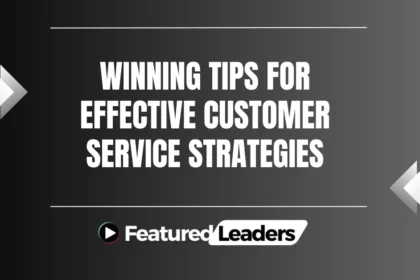Good management programs become real levers for workplace success when they align with business goals and leadership priorities.
Managers shape employees’ daily experience. A strengths-based approach helps leaders use their natural talents and build practical skills that boost engagement and safety.
Effective courses pair evidence-based content with safe practice, coaching, and follow-up. Measure outcomes with engagement scores, on-the-job metrics, and a check-in about 90 days after the course.
When training ties into a broader learning culture, organizations see measurable gains in productivity and reduced incidents. This article previews concrete strategies you can use to make that link and sustain behavior change.
Key Takeaways
- Align programs with organizational goals to drive real impact.
- Use strengths-based methods so managers lead from talent.
- Measure outcomes, not just attendance, with repeat assessments.
- Blend workshops, coaching, and projects for lasting change.
- Focus on skills that improve engagement, safety, and results.
Why Management Training Matters Right Now
Today, businesses face a talent gap: most people step into manager roles without clear preparation. Gallup finds only 1 in 10 have natural managerial talent and another 2 in 10 can be developed. That implies many companies promote the wrong people 82% of the time.
Poor engagement carries real costs. One study showed the bottom half of engagement lost 8,100 man-hours to safety incidents while the top half lost 936 hours. That gap hits productivity, retention, and company results.
Skilled managers lift performance, keep people, and make teams safer. Unprepared managers harm morale and cause avoidable costs. Purposeful training with clear goals and KPIs turns learning into observable change.
“Regular, focused development and anonymous feedback let organizations measure progress and repeat success.”
Give managers time to practice, follow up with tests and coaching, and align the program to business goals. That way, training becomes an investment that boosts engagement, reduces turnover, and improves work across the organization.
Key Components of Successful Management Training
Start with measurable goals so every manager knows what success looks like after learning. Clear objectives tie training to business results and set expectations for managers and teams.
Objectives That Link to Business Metrics
Define outcome-focused objectives that map to turnover, safety, and productivity. Use pre/post engagement checks and a 90-day follow-up to measure change.
Evidence-Based Content and Strengths
Use research-backed modules that connect behaviors to employee engagement. Combine assessments like Gallup StrengthsFinder with coaching so each manager applies natural talent to real work.
Practice, Coaching, and Real Work
Include structured practice, mentoring, and on-the-job projects. Provide feedback loops that help people refine skills and translate lessons into daily team actions.
Psychological Safety and Inclusion
Create a safe environment where managers and employees ask questions and learn from mistakes. Model inclusive leadership so culture and training reinforce one another.
| Focus | What to Measure | Typical Timeline |
|---|---|---|
| Objectives | Business KPIs, manager behaviors | Set before training |
| Content | Engagement scores, skill tests | During and 90 days after |
| Practice | Observed coaching, project outcomes | Ongoing with checkpoints |
| Culture | Inclusion ratings, feedback | Quarterly reviews |
Personalized, Adaptive Programs that Fit Managers and Teams
Adaptive programs match a manager’s experience, pace, and preferred format to boost on-the-job impact. Personalization improves outcomes when learning ties to career goals, department needs, and the formats people prefer.
Tailoring to roles, goals, and learning styles
Design training that aligns a manager’s role and team goals. Use short modules, workshops, or 1:1 coaching so managers can choose what fits their time and learning style.
Using 360 feedback and engagement insights
Collect anonymous 360 feedback from people they lead to reveal real strengths and gaps. Combine that with engagement data to target the most meaningful skills and priorities.
- Match delivery—self-paced, group, or live coaching—to the manager’s learning habits.
- Adjust depth based on prior experience so content stretches but does not overwhelm.
- Include practical assignments that let a manager demonstrate knowledge in daily work.
Practical, tailored development helps managers apply new skills quickly, keeps employees engaged, and makes leadership growth measurable over time.
Immersive Learning, Technology, and Scalable Delivery
When sessions mirror daily challenges, managers learn faster and apply changes sooner. Immersive formats—workshops, role plays, and simulations—keep participants engaged through problem-solving and peer discussion. These experiences let managers try new approaches in a safe setting.
Training software and virtual classrooms scale access without losing quality. Use platforms that include assessments, scenario practice, and discussion threads so leaders can show skills and get timely feedback.
Interactive workshops and peer problem-solving
Run group simulations that mirror a manager’s day-to-day work. Encourage peer coaching so teams share tactics and co-create solutions they can test on the job.
Technology and blended delivery
Select tools that support live sessions, asynchronous content, and built-in checkpoints. Blended programs let employees learn at their own pace while keeping a shared curriculum.
Access, time, and logistics
Plan schedules, coverage, and device access up front so staff can attend without harming outcomes. Leaders must champion participation and make time for follow-up practice.
“Immersive sessions plus smart logistics make learning feasible and measurable across a company.”
| Area | What to enable | Benefit |
|---|---|---|
| Workshops | Live scenarios, peer feedback | Faster skill transfer |
| Technology | Assessments, virtual classrooms | Scalable access |
| Logistics | Time, coverage, tools | Minimal disruption to work |
Measurement, Feedback Loops, and Continuous Improvement
Measure what matters so learning turns into visible change. A compact plan helps managers and leaders track knowledge gains, team outcomes, and business results.
Pre/post assessments, on-the-job metrics, and KPIs
Start with pre- and post-training assessments tied to objectives and goals. Use tests to quantify knowledge and skills improvements.
Combine those results with on-the-job metrics: customer surveys, performance reviews, retention, and progression data. This mix shows how manager behaviors change team performance over time.
Engagement re-measurement and scheduled follow-ups
Re-measure engagement about 90 days after a course to capture sustained change. Schedule manager follow-ups at set cadences so learning is reinforced and accountability stays clear.
Leader observations and anonymous participant input
Use leader and facilitator observations to guide targeted coaching. Short, focused observations reveal where a manager needs support or stretch assignments.
Collect anonymous feedback after sessions to learn what resonated and what to improve. That input helps refine content, format, and time allocation for future programs.
- Establish assessments that map to objectives and goals for measurable improvement.
- Track team output and business outcomes to link training to concrete results.
- Schedule 90-day checks and manager follow-ups to sustain change.
- Combine observations and anonymous feedback to adjust coaching and content.
Compare performance and engagement indicators and share aggregated insights with leaders. Adjust curricula based on data so programs remain relevant and deliver the performance and results the organization needs.
From Classes to Strategy: Aligning Programs with Company Objectives
Linking courses and on-the-job practice helps an organization move from isolated learning to measurable business impact.

Connecting offerings into a coherent corporate learning strategy
Connect classes and programs so every manager hears the same language and follows aligned processes. A unified strategy prevents mixed messages and supports clear goals across the company.
Coordinate calendars and coverage with leaders so managers can practice without harming operations. Publish expectations and set a review cadence so the strategy stays current with business needs.
Skills mapping for current, future, and leadership roles
Map the skills required for current roles, future roles, and leadership roles. Include needs for new hires, reskilling, and upskilling so teams adapt without fragmented learning paths.
Use metrics—pre/post tests, retention rates, progression data, facilitator observations, and on-the-job performance—to evaluate the program and guide investment.
- Connect classes into one coherent program so managers get steady development.
- Map skills for hires, managers, and leaders to build a stronger talent pipeline.
- Set visible goals and a regular review rhythm that leaders and employees trust.
| Strategy Element | What to Track | Business Benefit |
|---|---|---|
| Program alignment | Published goals, shared language | Consistent leadership practice across teams |
| Skills mapping | Role skill matrices, gap analysis | Better hiring, faster promotion, targeted learning |
| Coordination | Leader schedules, coverage plans | Time for practice without workflow disruption |
| Evaluation | Pre/post tests, retention, on-the-job KPIs | Clear ROI and continuous course improvement |
Conclusion
Practical, role-aligned development helps managers solve real job problems from day one. Focused training lifts productivity and workplace performance. It gives people tools they use in daily work and improves employee experience.
Success depends on clarity and follow-up. Define objectives, use strengths-based coaching, and align practice to each role. Regular mentoring and anonymous feedback help retention and sustained behavior change.
Measure progress with pre/post tests, engagement checks, and job metrics so the organization sees real improvement. Leaders must provide time and coverage so managers can practice. Act now: build a unified, data-driven approach that elevates managers, strengthens culture, and drives business success.
FAQ
What makes management training urgent for companies today?
Effective manager development improves employee engagement, retention, and team productivity. With hybrid work, fast-changing goals, and talent shortages, investing in leadership skills helps organizations meet business objectives and adapt to change.
How do I set measurable objectives for a manager program?
Define clear business-aligned goals like reduced turnover, faster project delivery, or higher engagement scores. Use pre/post assessments, KPIs, and on-the-job metrics to track progress and link learning to results.
What content works best for improving manager performance?
Choose evidence-based material focused on communication, feedback, coaching, and decision-making. Include real-world scenarios, role plays, and case studies to boost transfer of learning to daily work.
How can training build manager self-awareness and strengths?
Use 360 feedback, strengths assessments, and reflective exercises. Combine facilitator-led sessions with one-on-one coaching so managers recognize habits, leverage strengths, and close skill gaps.
What role does coaching and on-the-job practice play?
Structured practice and mentoring turn new skills into routine behavior. Short practice cycles, manager check-ins, and shadowing make training stick and improve team performance over time.
How do you create a psychologically safe learning environment?
Encourage open dialogue, model vulnerability, and set norms for respectful feedback. Inclusive facilitation and anonymous inputs help participants take risks and learn from mistakes.
How should programs be tailored across different roles and teams?
Map skills to role requirements and career levels. Use adaptive learning paths, role-based cohorts, and department-specific scenarios so content stays relevant to managers’ daily responsibilities.
Can technology scale manager development without losing quality?
Yes. Blend virtual classrooms, microlearning, simulations, and coaching platforms to scale. Keep live interaction and peer problem-solving to preserve engagement and application.
What logistics matter when scheduling manager training?
Account for workload, time zones, and coverage. Offer short modules, recorded options, and manager backfill plans so learning fits into real work without disrupting teams.
How do you measure long-term impact of manager programs?
Combine immediate assessments with long-term KPIs like team engagement, productivity, and retention. Re-measure engagement at set cadences and use leader observations to refine programs.
Should feedback in programs be anonymous?
Anonymous feedback encourages honesty and uncovers blind spots. Pair it with coached debriefs so managers get actionable insights while maintaining psychological safety.
How do training offerings align with broader company strategy?
Connect learning objectives to corporate goals and talent strategies. Use skills mapping for current and future roles to ensure development supports succession and business priorities.
What is the right balance between classroom and on-the-job learning?
Blend interactive workshops with applied projects and coaching. Classroom time introduces frameworks; on-the-job practice ensures behaviors change and deliver measurable results.
How often should managers receive follow-up support after training?
Schedule follow-ups at regular cadences—30, 90, and 180 days—to reinforce skills. Ongoing coaching and refresher modules keep momentum and address emerging challenges.
How do you handle diverse learning styles in manager programs?
Offer multimodal content—videos, readings, simulations, and peer discussions. Personalize pathways using assessments so each manager learns in ways that suit them best.






